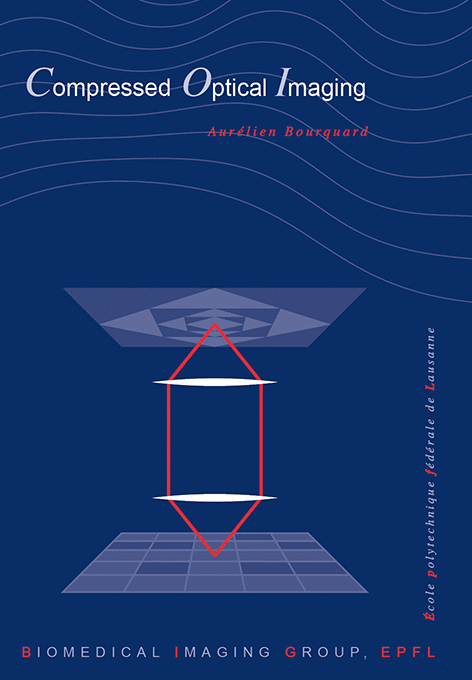Compressed Optical Imaging
A. Bourquard
École polytechnique fédérale de Lausanne, EPFL Thesis no. 5908 (2013), 157 p., December 23, 2013.
We address the resolution of inverse problems where visual data must be recovered from incomplete information optically acquired in the spatial domain. The optical acquisition models that are involved share a common mathematical structure consisting of a linear operator followed by optional pointwise nonlinearities. The linear operator generally includes lowpass filtering effects and, in some cases, downsampling. Both tend to make the problems ill-posed. Our general resolution strategy is to rely on variational principles, which allows for a tight control on the objective or perceptual quality of the reconstructed data. The three related problems that we investigate and propose to solve are
- The reconstruction of images from sparse samples. Following a non-ideal acquisition framework, the measurements take the form of spatial-domain samples whose locations are specified a priori. The reconstruction algorithm that we propose is linked to PDE flows with tensor-valued diffusivities. We demonstrate through several experiments that our approach preserves finer visual features than standard interpolation techniques do, especially at very low sampling rates.
- The reconstruction of images from binary measurements. The acquisition model that we consider relies on optical principles and fits in a compressed-sensing framework. We develop a reconstruction algorithm that allows us to recover grayscale images from the available binary data. It substantially improves upon the state of the art in terms of quality and computational performance. Our overall approach is physically relevant; moreover, it can handle large amounts of data efficiently.
- The reconstruction of phase and amplitude profiles from single digital holographic acquisitions. Unlike conventional approaches that are based on demodulation, our iterative reconstruction method is able to accurately recover the original object from a single downsampled intensity hologram, as shown in simulated and real measurement settings. It also consistently outperforms the state of the art in terms of signal-to-noise ratio and with respect to the size of the field of view.
The common goal of the proposed reconstruction methods is to yield an accurate estimate of the original data from all available measurements. In accordance with the forward model, they are typically capable of handling samples that are sparse in the spatial domain and/or distorted due to pointwise nonlinear effects, as demonstrated in our experiments.

@PHDTHESIS(http://bigwww.epfl.ch/publications/bourquard1304.html,
AUTHOR="Bourquard, A.",
TITLE="Compressed Optical Imaging",
SCHOOL="{\'{E}}cole polytechnique f{\'{e}}d{\'{e}}rale de {L}ausanne
({EPFL})",
YEAR="2013",
type="{EPFL} Thesis no.\ 5908 (2013), 157 p.",
address="",
month="December 23,",
note="")